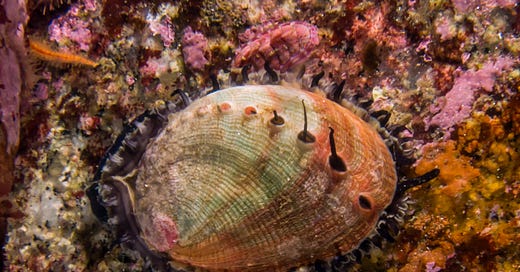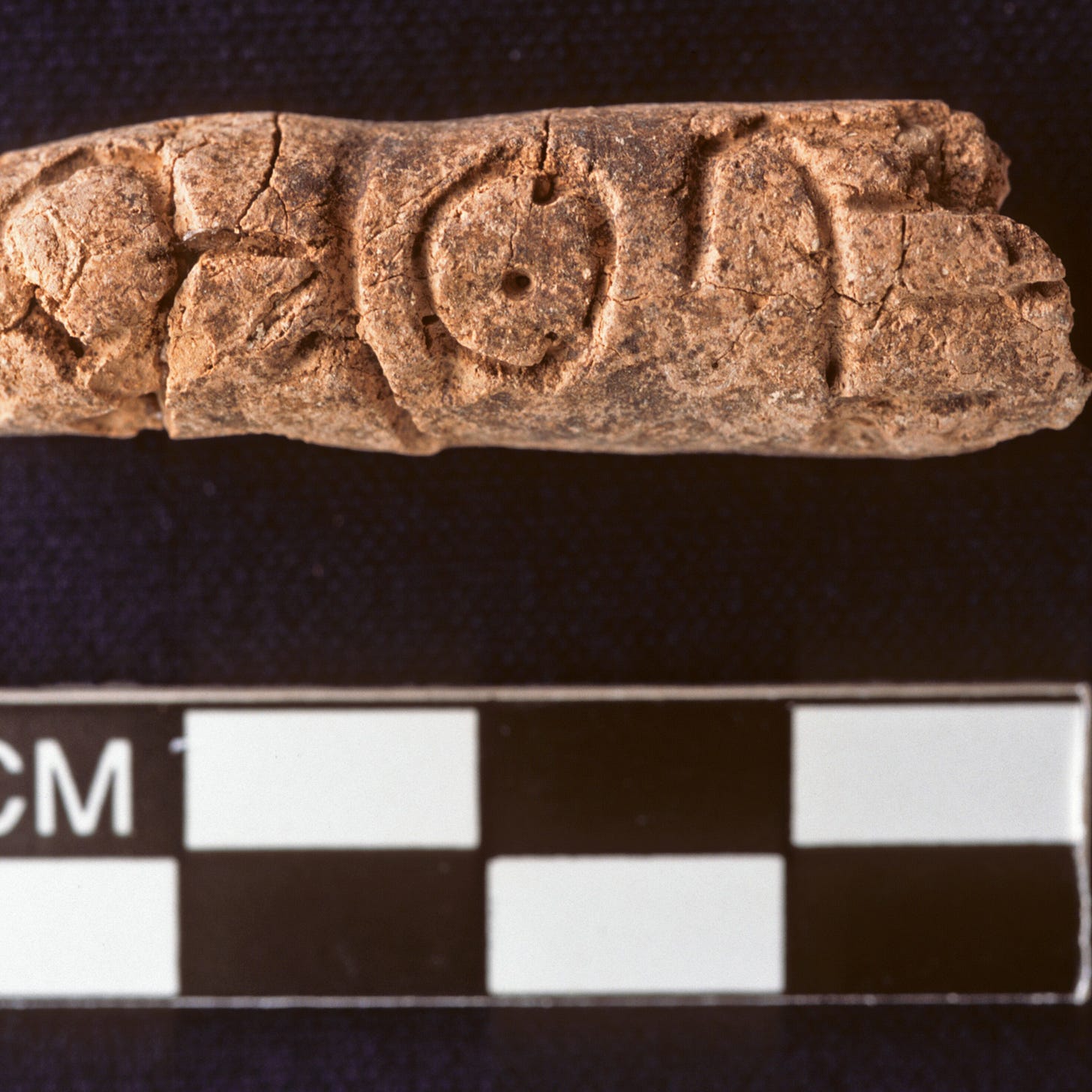This Week on the Central Coast…
A closer look at the Monterey Abalone Company, Midtown Alley gets the first mural of many, and a UCSC professor discovers ancient writing. Also, keep an eye out later this week for a new interview!
Monterey
Meet the Monterey Abalone Company
The Monterey Abalone Company is a sustainable abalone farm that opened in the ‘90s as a response to the closure of commercial abalone fisheries. They are located on the Municipal Wharf, above the farm which consists of several cages hanging directly in the Monterey Bay. Art Seavey, who is the current president and a partner of the business, spoke to siliconvalley.com about their operations and the popularity of the sea snail.
The reason for growing the abalone in cages rather than harvesting from the seabed is due to the closure of the fisheries. However, an outbreak of withering syndrome in abalone is what led to the closures in the first place. By growing the abalone themselves, Seavey and his crew can control these risks.
Their abalone range in price based on their size. A medium-sized abalone costs around $20. The Abalone Company only grows California Reds, which take a long time to grow. Seavey explained that the size of an abalone shell directly relates to their age. The smallest size they sell is three and a half inches and takes about four years to grow.
If you’ve never had abalone before, the company explains the taste as a cross between calamari and scallops and the texture closer to calamari - that is, cooked correctly, it’s tender and delicious, but overcooked, it turns tough and chewy. The Abalone Company is a true Monterey staple and ships primarily within California, only shipping to the East Coast when production size allows for it.
Salinas
Midtown Alley Gets Its First Mural
A new mural has gone up in Midtown Alley in downtown, near Artist’s Ink. A collaborative effort, the mural depicts a woman staring into the distance, a striking sun rising behind her over the Salinas landscape. The woman’s face is split across the middle. The upper half features artist Nada Abdelshahid’s eyes and the bottom is Katie Santiago’s mouth with red lipstick. The overall piece was conceptualized by Bonnie Broderick, “whose usual work, like the mural, tends toward surrealism and the abstract.”
The final piece of the group was Amy Burkman, who heads a mentorship program that includes the other three. It was Burkman’s overall mission of using artwork for good that attracted the others.
“The mural, part of United Way Monterey County’s Impact Center Mural Project, is one of many by local artists that will eventually fill Midtown Alley.” The artists had a great time working together on the new mural: “It's exciting to work in the city where you live and create art that represents your neighbors — and yourself,” Abdelshahid said.
Santa Cruz
Early Ancient Writing Found By UCSC Professor
Elaine Sullivan is a history teacher at UC Santa Cruz who specializes in Egyptology and the application of new technologies to study ancient cultural materials. Her non-teaching work includes a digital publication called “Constructing the Sacred”, which “utilizes a geo-temporal 3D model of the necropolis of Saqqara (near modern Cairo) to investigate questions of ritual landscape and visibility at the site.”
In 2004, before she was teaching at UCSC, Sullivan was part of a John Hopkins University dig team in Syria. It was at this dig site that she found four cylindrical artifacts about the size of a finger. The artifacts had what appeared to be writing on them. At the time, Sullivan had no idea how impactful her discovery could be. “I knew it was important. I certainly did not have any idea that it might be alphabetic symbols and that this would be pushing back our recognition of the alphabet by centuries.”
The artifacts were found in a tomb with skeletons and several metal and ceramic vessels. The team believes the vessels were probably used to hold food for the dead to take with them into the afterlife. Sullivan and another archaeologist, Dr. Schwartz, believe the artifacts she found could have been used as tags to identify the contents of the vessels.
Since the discovery, more and more experts on ancient alphabetic writing have taken an interest. Sullivan is no longer involved in the study, but she is excited to see the increased attention it has gotten. Currently, she’s writing a book “about the diffusion of ancient Egyptian objects through the modern world”, which she hopes to have completed by 2026.







I love your publication, especially the updates on what’s happening with ocean life in the area. Thank you!